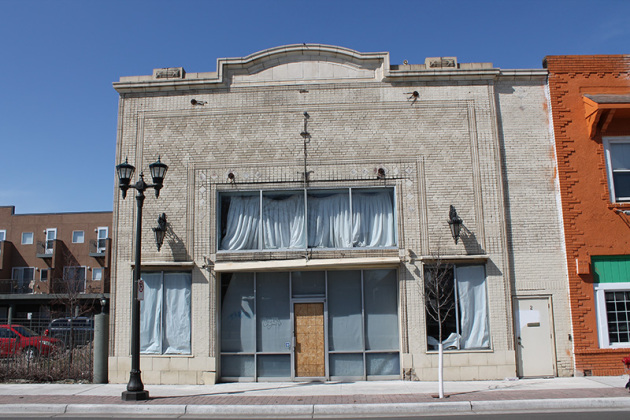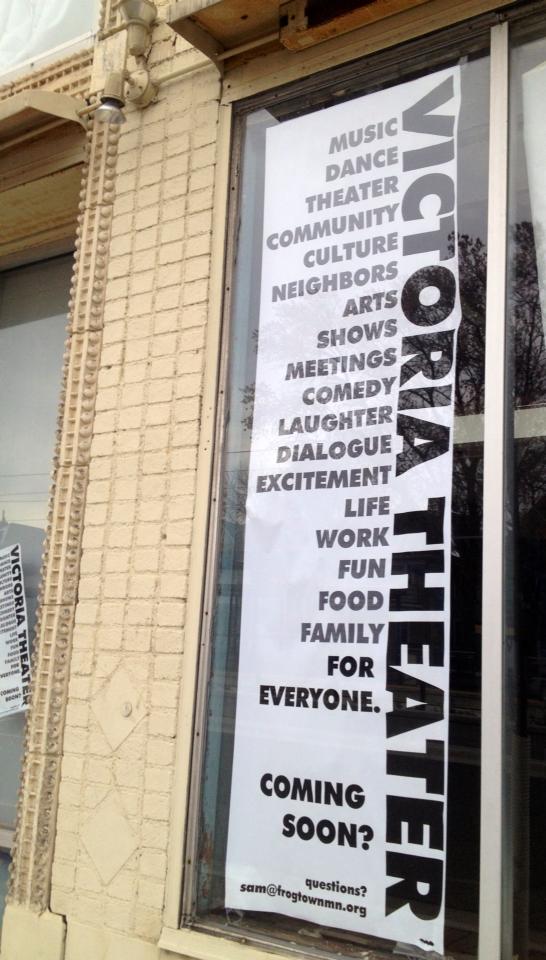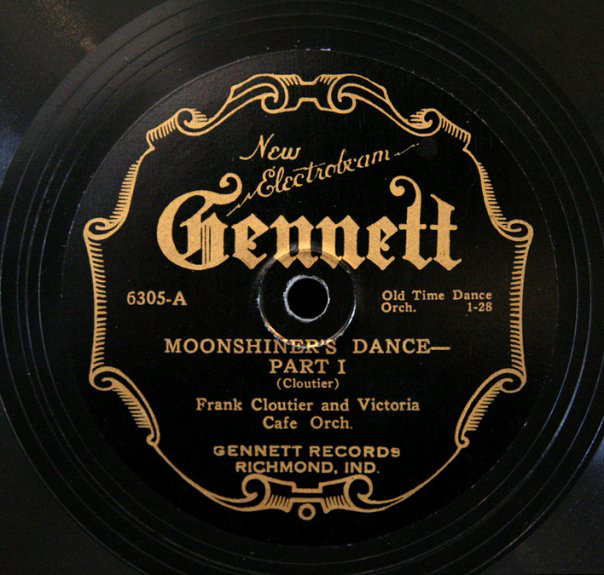
St. Paul’s Historic Victoria Theater Slated for Renovation and New Life as a Community Arts Center
“If a building could smile, this place would have an ear-to-ear grin today,” said a Frogtown resident at last week’s press conference about plans to turn the neighborhood’s historic but long derelict Victoria Theater into a community arts center. Another resident, a 22-year Frogtown homeowner who’s been actively involved in efforts to revitalize the landmark, Denise Mwasyeba said, “Many people believed this neighborhood faced insurmountable challenges” – the ravages of a bad economy and widespread unemployment, including drug-related crimes, increasing home foreclosures and high vacancy rates in the area’s commercial properties. “But soon,” she said, thanks to this and other neighborhood revitalization projects underway, “the name Frogtown will be synonymous with fun.”
The afternoon of January 16, community leaders, neighborhood artists and business owners, local politicians and city officials all gathered inside the shell of the old theater at 825 University Avenue to share the first public details about the building’s purchase by the Twin Cities Community Land Bank. The land bank reportedly bought the site for $275,00 last week on behalf of the Victoria Theater Arts Initiative (VTAI), a consortium of Saint Paul-based organizations who intend to redevelop the Victoria Theater and turn it into a community-owned and managed arts center.
A sign of things to come, in the window of the old theater. Courtesy of Dangerous Productions on Facebook
The coalition behind this endeavor includes two Knight Arts grantees – the Center for Hmong Arts and Talent (CHAT) and Dangerous Productions – as well as the Frogtown Neighborhood Association, Historic Saint Paul and the New Victoria Theater Project. This grassroots group is working with support and encouragement of the land bank, and also (Knight Arts grantees) Irrigate, Springboard for the Arts, and the City of Saint Paul.
The Beaux-Arts style building, one of the few still standing designed by noted St. Paul architect Franklin Ellerbe, was built as a silent movie house in 1915. Then, from 1924 to the 1930s, it was home to a Prohibition-era nightclub and cabaret called the Victoria Café. (There’s a good slideshow, including a number of photos from this era in the theater’s history, over at MPR’s website.) After that, the building was converted into retail space which housed a lamps-and-lighting fixtures storefront for many years. When the shop closed in the 1990s, the old building was left vacant and soon fell into disrepair. After sitting empty for a decade, then-owners of the site considered selling the land and demolishing the building to make way for a parking lot. Thanks to neighborhood outcry and activist efforts, the Victoria Theater was saved from the wrecking ball in 2009. Its future was ensured when, in 2011, the building was designated a heritage preservation site by the City of Saint Paul.
Dangerous Productions’ Tyler Olsen said, “The focus [of the renovated site] will be on art coming out of this community.” Sam Buffington of the Frogtown Neighborhood Association echoed him, saying, “this isn’t something driven by outside developers. It’s truly coming from the neighborhood – artists and residents of Frogtown have been instrumental in leading the way for this.” Olsen remarked on the recently shuttered Gremlin Theatre, also on University Avenue, and noted the need for another mid-sized performance space in the neighborhood. What’s more, right on the new light-rail Green Line connecting the cities, such development holds promise for drawing new visitors (and dollars) to Frogtown’s shops and restaurants. Olsen says: “This brings theater out to a part of the city that thousands of people will be commuting through every day, the Central Corridor.”
The consortium behind VTAI has its work cut out for it: In the coming 18 months, these organizations will need to raise funds substantial enough to cover both the extensive construction required to renovate the now-gutted building and to purchase the site back from the land bank currently holding it for them. That amounts to many hundreds of thousands of dollars, at least. In addition, coalition stakeholders will spend the coming months fine-tuning the organizational structure and community partnerships, and developing areas of programming focus for the future cultural center.
Record of “Moonshiner’s Dance Part 1.” Photo courtesy of Aaron Rubenstein and Minnesota Public Radio.
Olsen notes that it’s only fitting to revive the Victoria Theater as a home for the arts, because “it’s art that ultimately saved this building.” It turns out, in its speakeasy days the place was home to Frank Cloutier and the Victoria Café Orchestra, who made a now-significant 1927 recording of an exuberant little barroom polka-swing tune called “The Moonshiner’s Dance.” That recording is among those included in the Smithsonian Folkways’ important 1952, six-album Anthology of American Folk Music that provided much of the source material for the nation’s folk music revival in the 1950s and 60s. And the theater’s connection to that culturally significant recording is generally credited with tipping the balance in favor of community efforts to save the site.
Incidentally, you can hear a rare live performance of “The Moonshiner’s Dance” this very week: it’ll be sung by the Rose Ensemble at the Minnesota History Center in St. Paul as part of their “A Toast to Prohibition” program. Find more information about the show and ticket details here.
For more information on current and future efforts to redevelop the Victoria Theater, visit the arts consortium’s new website, www.victoriatheater.org.
Recent Content
-
Artsarticle ·
-
Artsarticle ·
-
Artsarticle ·



